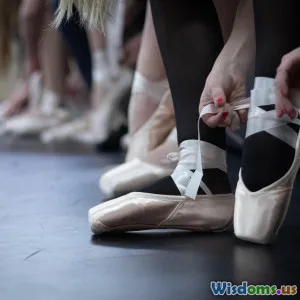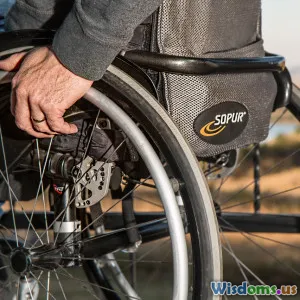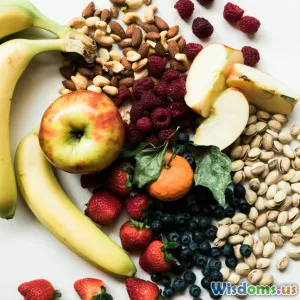
The Hydration Mistake Even Pro Athletes Still Make Today
8 min read Discover the common hydration error even professional athletes make and learn practical strategies to improve hydration for peak performance. (0 Reviews)
The Hydration Mistake Even Pro Athletes Still Make Today
Hydration is universally acknowledged as a cornerstone of athletic performance—water fuels the body and replenishes lost fluids during sweat-drenched training sessions and intense competitions. Yet, a surprising hydration mistake continues to haunt even professional athletes in 2024, undermining their performance and recovery. This oversight is not about drinking too little water, but rather the failure to balance what and how they hydrate, especially regarding electrolytes and fluid timing.
Why Hydration Is More Complex Than It Seems
Many athletes equate proper hydration simply with drinking plenty of water. But this simplification overlooks the body's complex fluid and electrolyte dynamics. During exercise, the loss of fluids through sweat is accompanied by a proportional depletion of sodium, potassium, magnesium, and calcium—key electrolytes essential for muscle contractions, nerve function, and maintaining fluid balance.
Take the case of elite marathon runner Shalane Flanagan, who has emphasized in interviews the importance of tailored hydration strategies, citing that “water alone isn’t enough — you need to replace what you lose in sweat to maintain that balance.”
The collective mistake? Overconsumption of plain water dilutes sodium levels, potentially risking a condition called hyponatremia, which can impair performance and even be dangerous.
The Mistake: Ignoring Electrolytes and Timing
1. Overhydration Without Electrolyte Replacement
Drinking excessive amounts of only water before or during long training sessions leads to an electrolyte imbalance. Evidence from a 2019 study in the Journal of Applied Physiology revealed that endurance athletes hydrating solely with water have a higher incidence of exercise-associated hyponatremia compared to those who consumed electrolyte-enriched beverages.
This is critical for athletes engaging in prolonged or high-intensity activities, such as triathlons or soccer matches, where sweating is copious and frequent.
2. Neglecting Individual Hydration Needs
Another pitfall is applying a "one-size-fits-all" approach. Sweat rate and sweat sodium concentration vary widely among individuals, influenced by genetics, environment, fitness level, and acclimatization.
For example, data from a sweat analysis on professional cyclists show sodium loss can range significantly—from 400 mg/L to over 2000 mg/L. If athletes ignore these variations, they risk under- or over-consuming electrolytes and fluids.
3. Timing of Fluid Intake
Hydrating only during or after exercise misses a vital window: pre-hydration. Arriving at exercise either dehydrated or hyperhydrated affects overall balance and performance. Pro athletes employing strategies like pre-exercise sodium loading have reported better endurance and reduced cramps.
Real-World Insights: How Top Athletes Address Hydration
Tailored Hydration Plans
Olympic swim champion Katie Ledecky reportedly customizes her hydration with electrolyte drinks throughout meets, carefully balancing flavor, sodium, and carbohydrate content to sustain energy and fluid levels.
Sweat Testing and Monitoring
Teams like the New England Patriots and Golden State Warriors have integrated sweat testing protocols to measure individual loss patterns. This helps develop personalized hydration guidelines used by trainers and athletes.
Use of Tech and Wearables
Wearables now offer real-time sweat and hydration monitoring, alerting athletes to their dehydration risk before performance drops. These insights enable dynamic adjustments, reducing reliance on rote water consumption.
How to Fix the Hydration Mistake Today: Practical Steps
1. Conduct Sweat Testing
If feasible, athletes should assess their sweat rate and electrolyte loss. Simple methods include weighing before and after exercise, combined with salt residue measurements, available at some sports clinics.
2. Use Balanced Hydration Solutions
Instead of water alone, incorporate sports drinks or electrolyte supplements that reflect your sweat profile. Products with tailored sodium, potassium, and magnesium compositions will more effectively restore balance.
3. Develop Timed Hydration Protocols
Pre-hydrate with moderate electrolyte-enhanced fluids 2-4 hours before exercising. Hydrate systematically during to replace ongoing loss, then refuel post-exercise to restore homeostasis.
4. Avoid Overhydration
Consume fluids according to thirst and sweat loss rather than fixed high volumes to prevent hyponatremia risks.
5. Monitor Signs and Symptoms
Beware of headaches, nausea, muscle cramps, or fatigue during or after workouts—indicators of improper hydration status.
Conclusion: Hydration Intelligence Is Key
Although hydrating might seem straightforward, it is a science that demands precision—ignoring it can weaken even the most well-trained athletes. Understanding that water alone does not suffice moves us beyond the hydration myths of the past. Instead, embracing individualized, electrolyte-aware, and timed strategies can help athletes unlock their full potential.
Pro athletes and fitness enthusiasts alike must learn from the evolving science and tools now at our fingertips. The hydration mistakes of today can be corrected with knowledge, measurement, and mindful practice, leading to better performance, improved endurance, and safer exercise experiences.
“Hydration is not just drinking water. It is thoughtfully maintaining a balance inside the body that supports your muscular and nerve functions,” notes Dr. Emily Cooper, sports nutritionist with the US Track & Field Team.
Are you ready to rethink your hydration? The water bottle alone is not the answer anymore — it’s what’s inside and when you sip that counts most.
References
- Hew-Butler, T., et al. (2019). Exercise-Associated Hyponatremia: 2017 update. British Journal of Sports Medicine.
- Casa DJ et al., (2010). National Athletic Trainers’ Association Position Statement: Fluid Replacement for Athletes. Journal of Athletic Training.
- Flanagan, S. Interview: Runner’s World, 2022.
- Ledecky K’s Hydration Strategy Insights, Sports Nutrition Journal, 2023.
Disclaimer: This article provides informational content but is not a substitute for professional medical advice. Always consult with a healthcare provider or sports nutritionist for personalized guidance.
Rate the Post
User Reviews
Popular Posts




















